Passion flowers can make you feel like a lovelorn teenager: the ones you want most of all are the most troublesome, and by far the trickiest to hang on to in the long run. They flaunt spectacular colours and fine, intricate petals, but in reality it is only the duller ones that are fully hardy and dependable. The rest run a good chance of breaking your heart.
Some of the more spectacular passion flowers are in shades of brightest red, yellow, white and orange, but Jane Lindsay of Tynings Plants – holder of one of the two Passiflora National Collections – says gardeners should always be wary of hardiness claims thrown about by those trying to sell the latest hybrid. “Very few are fully hardy but often plant sellers push something as hardy in order to help it sell. Even those we consider hardy are actually happier in a fairly sheltered spot.”
Jump to
- How to grow passion flower
- Where to grow passion flower
- When does passion flower bloom?
- When to plant passion flower?
- When to prune passion flower?
- The best passion flowers to grow
How to grow passion flower
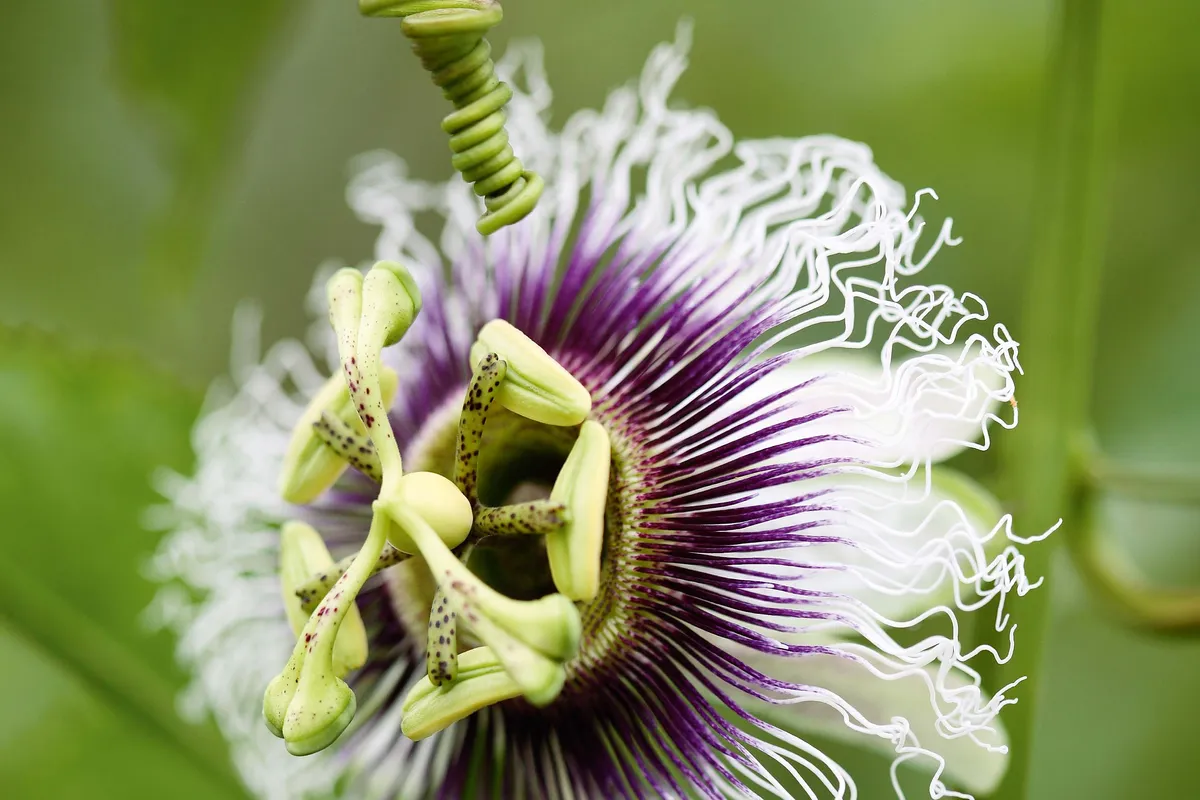
Where to grow passion flower
Jane breaks passion flowers down into several categories: the hardy; the half hardy; those for a cool greenhouse; and those for a conservatory or heated greenhouse.
The half hardies such as Passiflora ‘Betty Myles Young’ and Passiflora ‘Abigail’ are perhaps the most accessible of the more interesting types. They are only hardy down to -6°C, so they will survive winter in mild areas if they are given a sheltered spot with great drainage and a good stroke of luck.
Drainage is the key for all of the passion flowers, says Jane. “It is winter wet that they really don’t like, so if you are going to plant these half hardy ones outside, do it in the lee of a house wall where they won’t take the full force of the rain, and where their roots will be among builders' rubble.”
If you are not convinced that your area counts as ‘mild’, then even these need to be in a cold greenhouse. A cold greenhouse gives access to a whole group of passionflowers that will need that little bit of protection in the winter, but can be moved out of doors in summer. The edible passion flower, Passiflora edulis, is among this group.
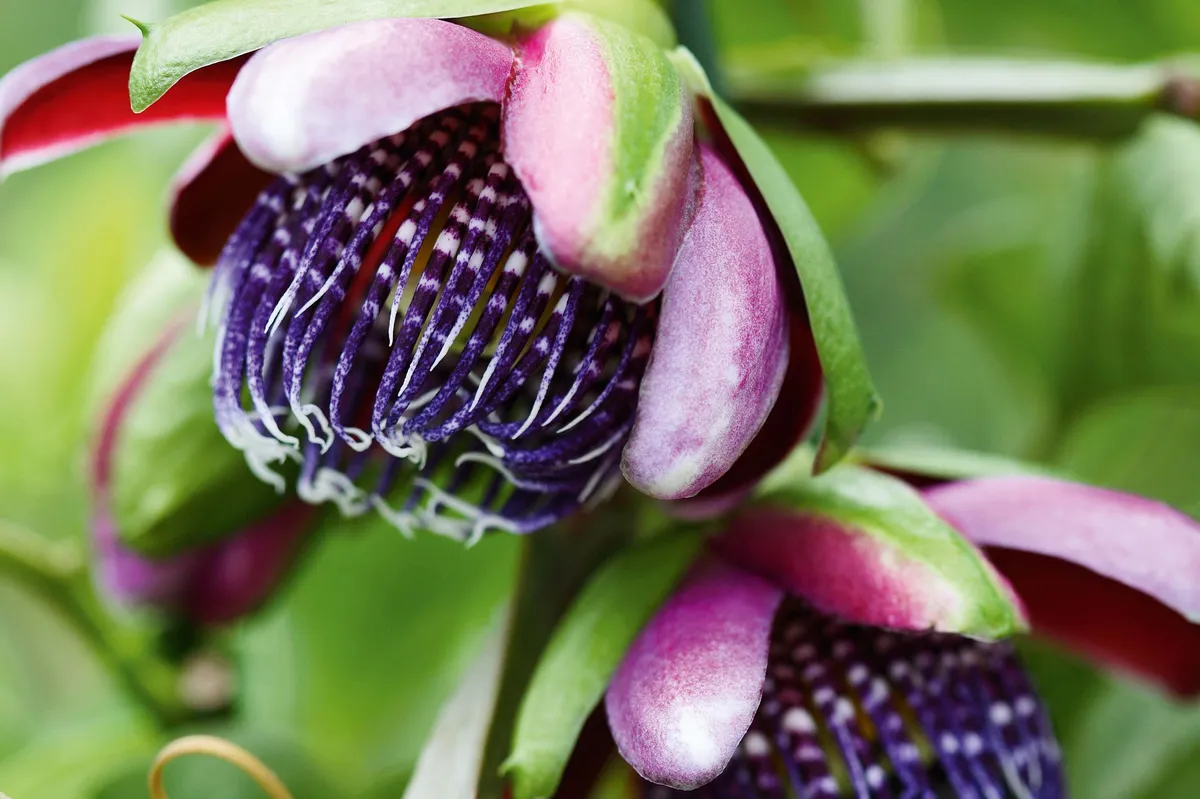
Beware winter wet gain here, says Jane. When growing them in pots it is important not to over-pot them. If you do, the roots can be left in damp compost throughout winter, and they hate that. Passion flowers like neglect, so pot on gradually, slowly building up the root system.
But of course the most lovely are the fussiest and most demanding, and need a heated greenhouse or conservatory in order to thrive. Some of the smallest of these, such as Passiflora citrina, with beautiful little starburst yellow flowers, and Passiflora allantophylla – which has the tiniest and most intricate flowers of all – can even be grown as an unusual houseplant.
If you have a heated conservatory, and particularly if you are lucky enough to have conservatory borders in which they can spread their roots, you can plant one of these objects of desire with the certainty that it will stick with you.
When does passion flower bloom?
The main flowering time for most passion flowers is from July to September.
When to plant passion flower?
Passion flowers that are going to be grown outside should be planted in spring, once the soil has warmed up and there is no danger of late frosts.
When to prune passion flower?
Prune back passion flowers in early spring if necessary.
How to prune passion flower?
Remove any dead or damaged stems, and old flowered stems. Flowers are produced on new growth.
If your plant has been damaged by frost, try cutting the stems back to 30cm from the ground in spring. It may regrow.
If your plant is overgrown, you can also try cutting it back to 30-60cm from the ground in spring. You will sacrifice flowers for a year or two.
The best passion flowers to grow
Passiflora caerulea
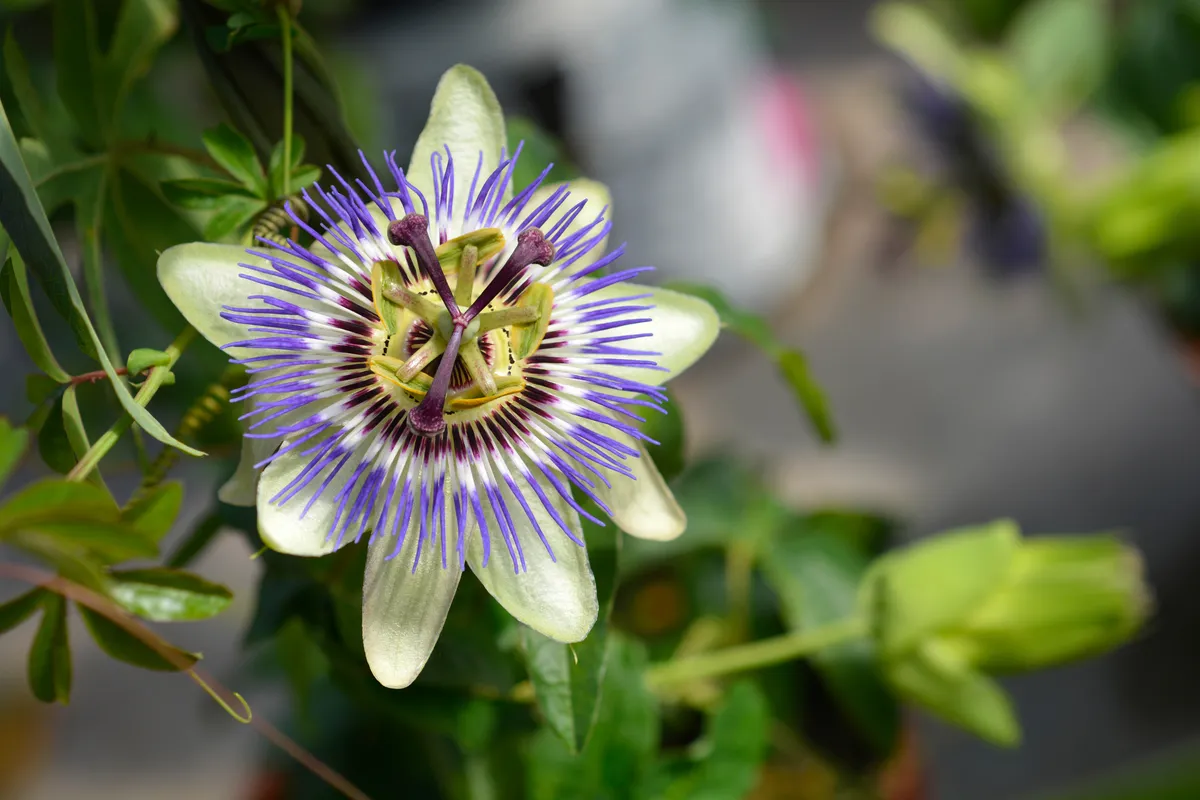
The most common passionflower, with uncommon looks – the beautiful large, white-green flowers have intricate violet and white filaments. They are very popular with bees. The flowers are followed by orange, oval fruits that are edible, but tasteless. Passiflora caerulea is a vigorous plant that will quickly cover a sunny wall, fence or pergola. It is hardy in most areas, but may need winter protection in colder parts of the UK. Height x spread: 12m x 4m.
Passiflora ‘Anastasia’
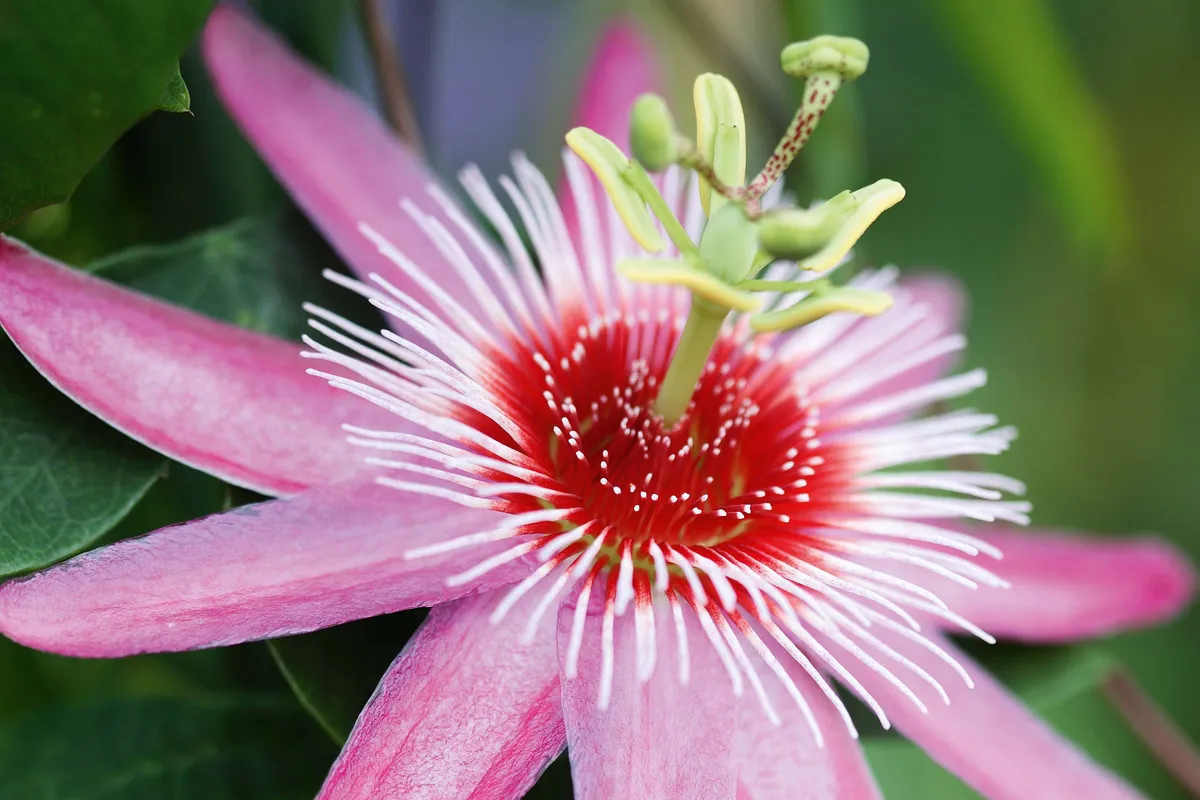
The deep-pink flowers of Passiflora ‘Anastasia’ are produced on long, trailing peduncles. The flowers then sit back beautifully, looking up slightly and making for a particularly elegant habit. Perfect for a cool glasshouse or unheated conservatory. USDA 11†.
Passiflora alata

Heavily perfumed with a lemony scent, this Amazonian native goes by the common name of fragrant granadilla. Grow it in a heated greenhouse or conservatory where it may produce its edible fruit, which are highly prized in Brazil. Height x spread: 6m x 1m. AGM*. RHS H1C, USDA 10a-11.
Passiflora vitifolia ‘Scarlet Flame’
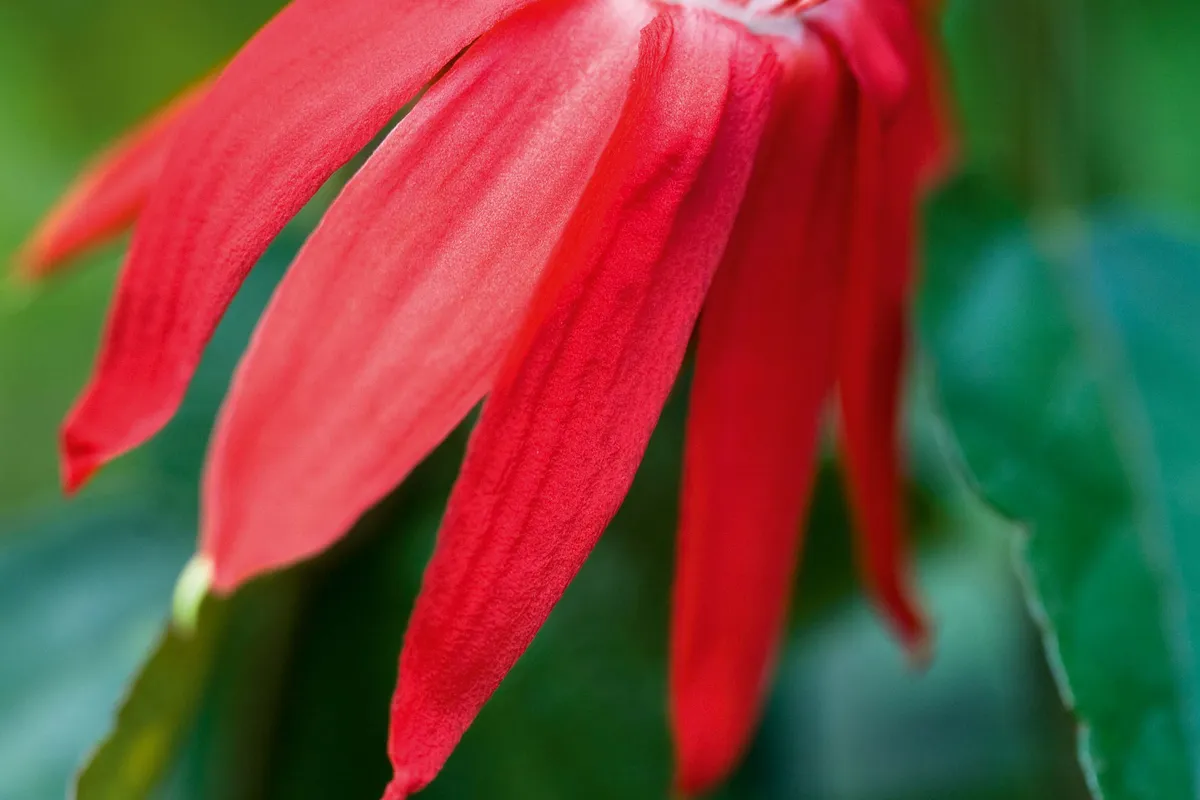
This bright-red beauty is not remotely hardy, but with enough heat it will produce flowers for ten months of the year. Large-growing and evergreen, it’s best in a conservatory border where it can spread. Minimum UK temperature 10-16°C. USDA 10a-11.
Passiflora aurantia
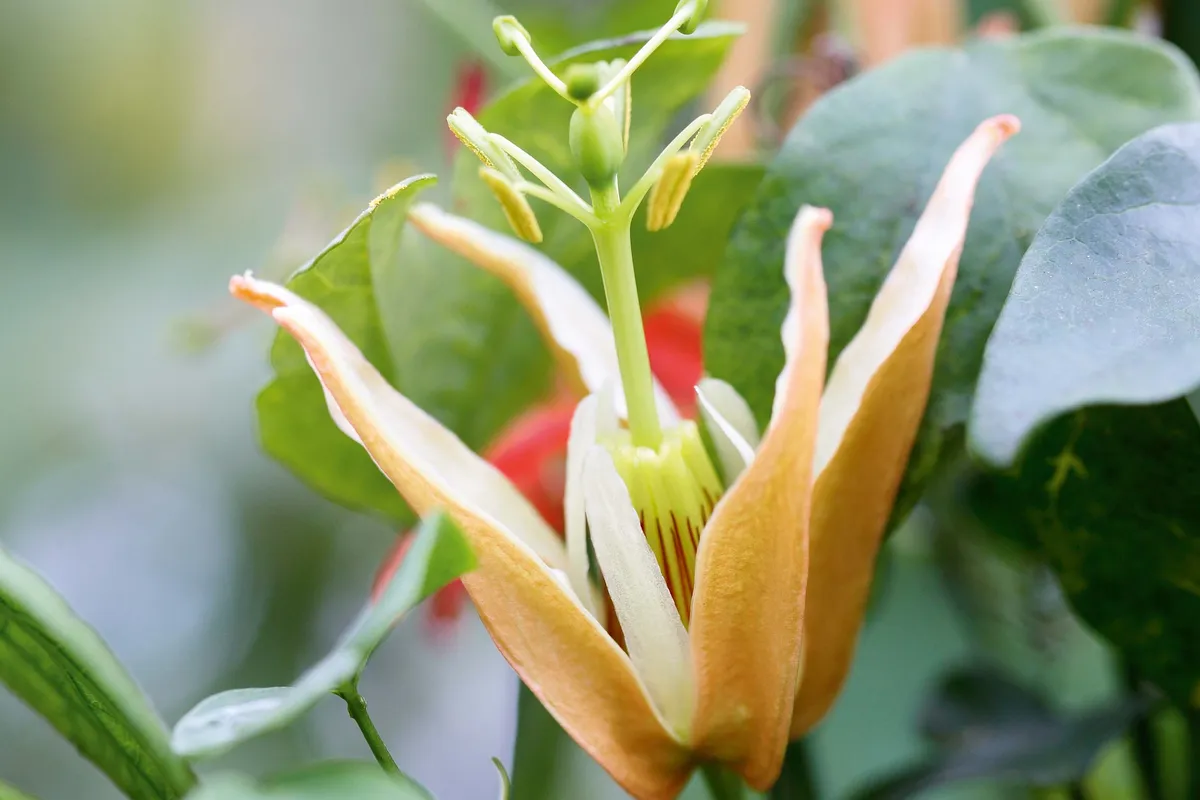
This pretty Australian species has a neat trick. Its long, thin-petalled flowers open a pale apricot and then deepen to a stronger orange over four or five days. Keep above 5°C in a lightly heated glasshouse. USDA 9b-11.
Passiflora x belotii
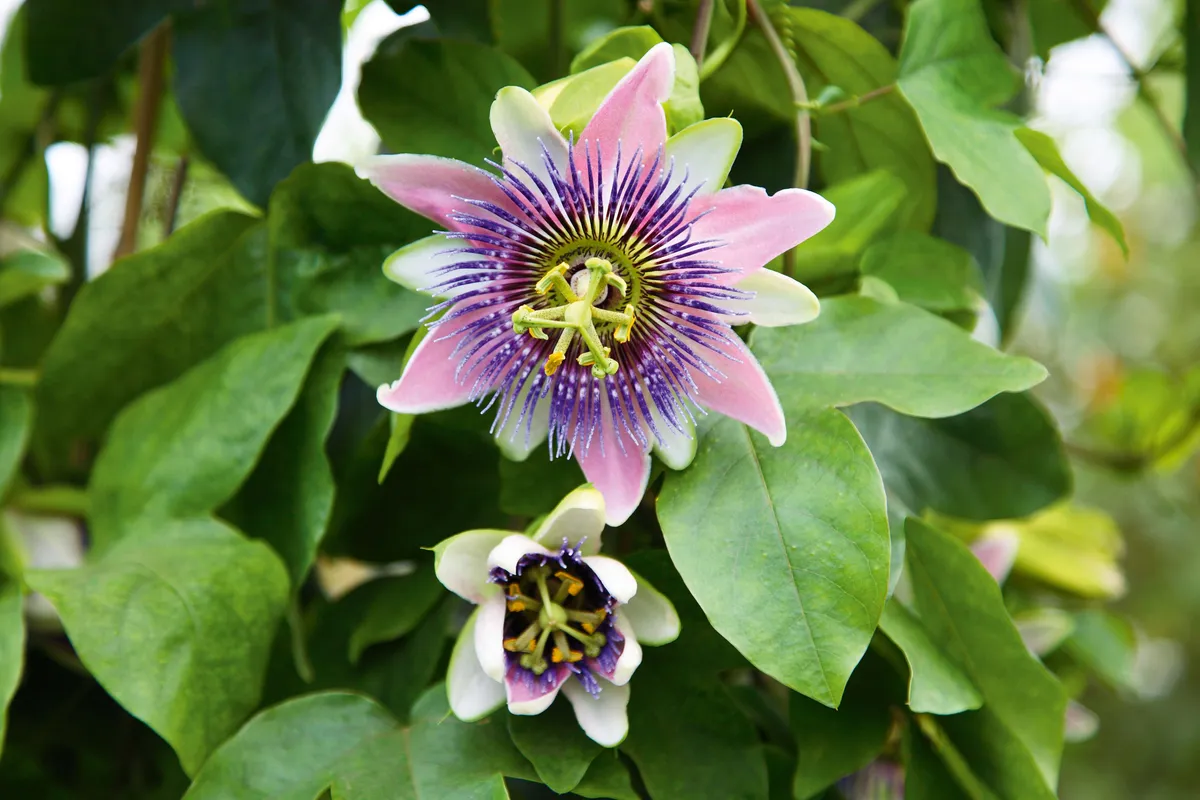
Beautiful Passiflora x belotii is a vigorous hybrid of Passiflora alata and Passiflora caerulea. It is very free flowering and the flowers are highly scented. It only needs a temperature of 2°C, so plant in an unheated glasshouse. USDA 7a-10b.
Passiflora ‘Amethyst’
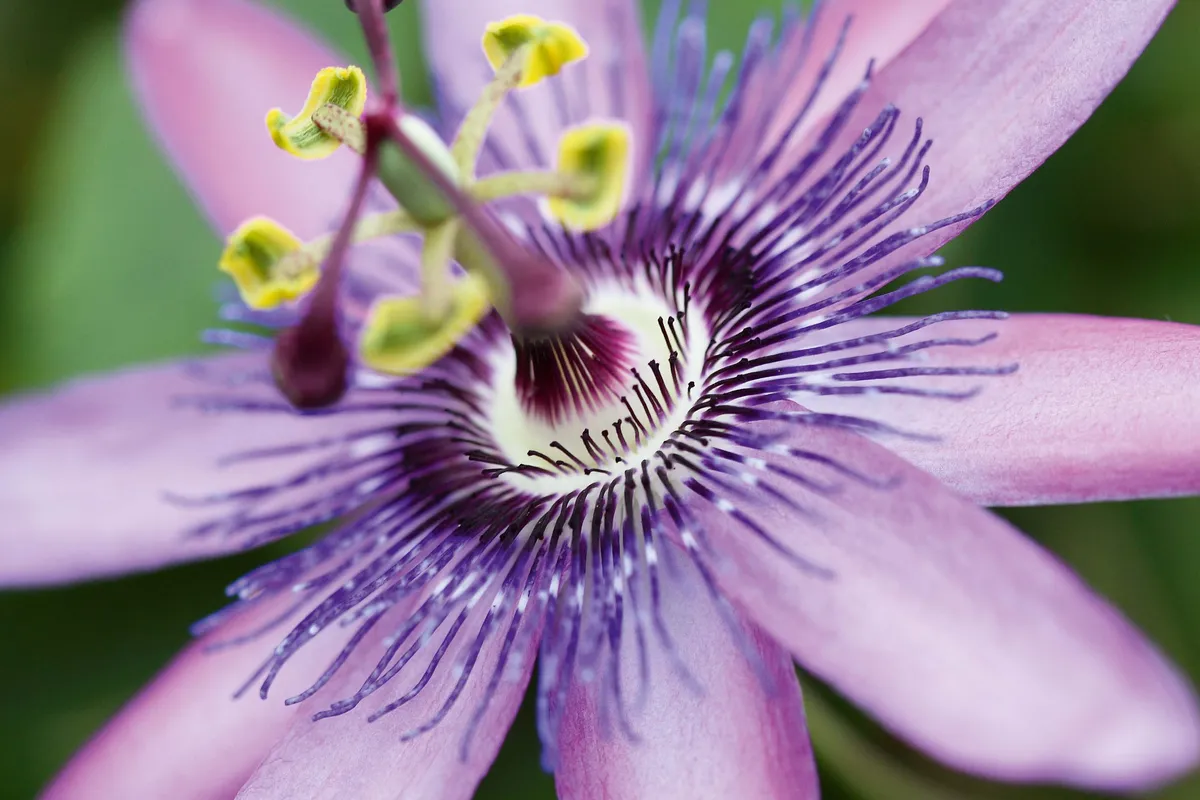
Passiflora ‘Amethyst’ has also been known as ‘Lavender Lady’ – a name that suits the beautiful, reflexed pale-purple flowers. In mild areas, try it outdoors in your sunniest, most sheltered spot, or give the protection of a cool glasshouse. AGM. RHS H3. USDA 7b-11.
Passiflora x smythiana
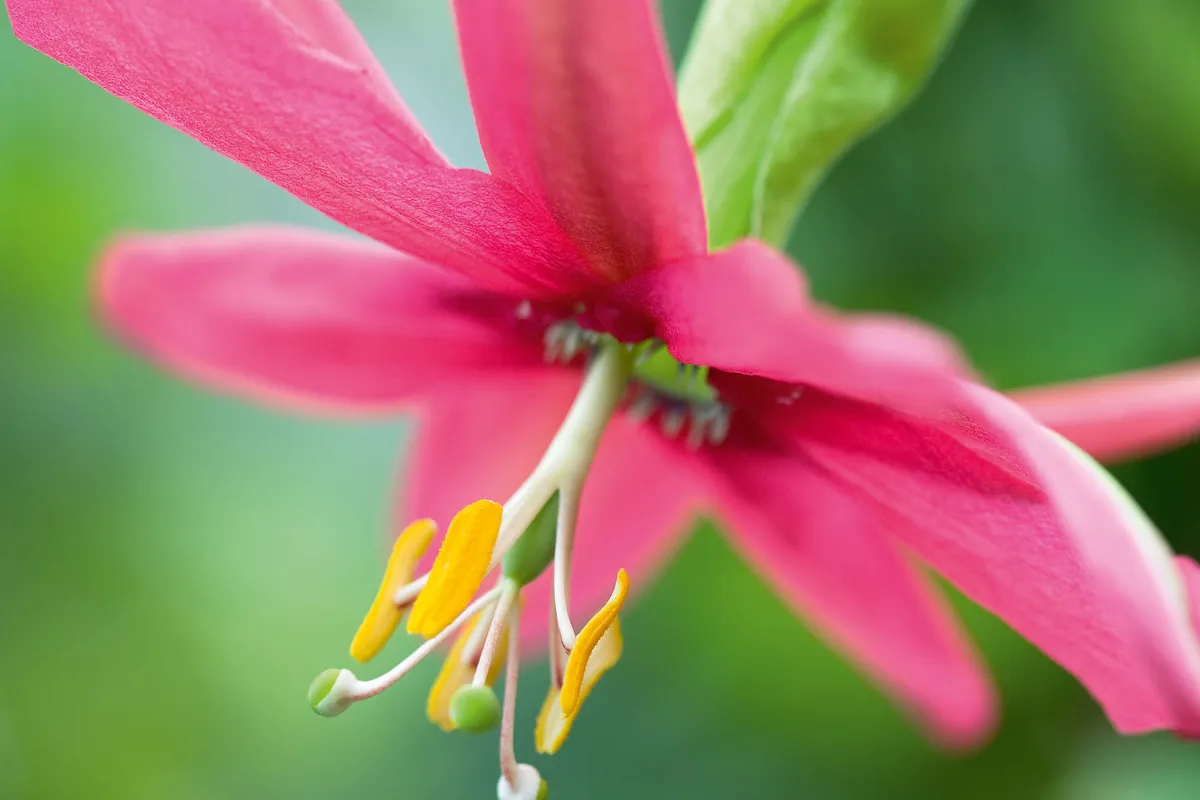
Passiflora x smythiana, a hybrid of Passiflora antioquiensis and Passiflora mixta, has large yet elegant dark rose-pink flowers, with strongly swept-back petals. A beautiful thing for the border of a glasshouse kept above 5°C.
Passiflora citrina
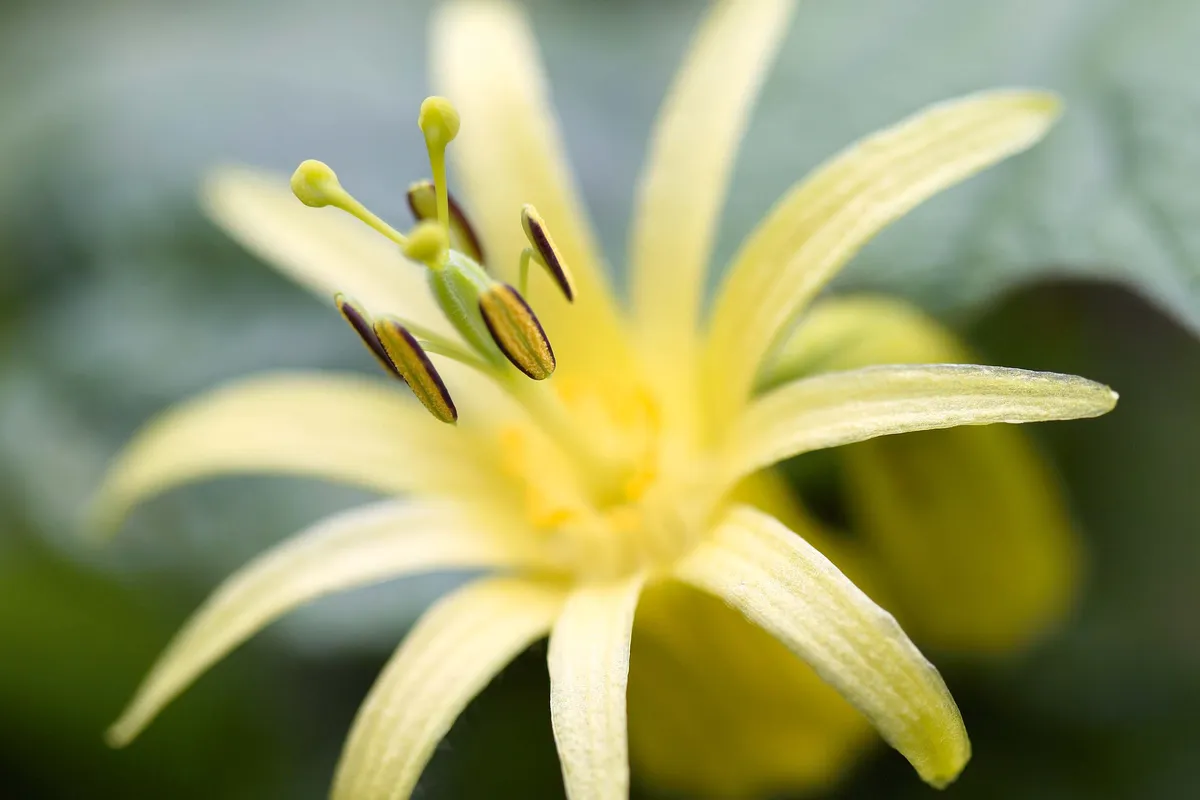
This passionflower is small and compact enough to be grown as a house plant, where it will produce its tiny, starry, lemon yellow flowers over a long period, up to ten months of the year. USDA 8a-10b.
Passiflora ‘Abigail’
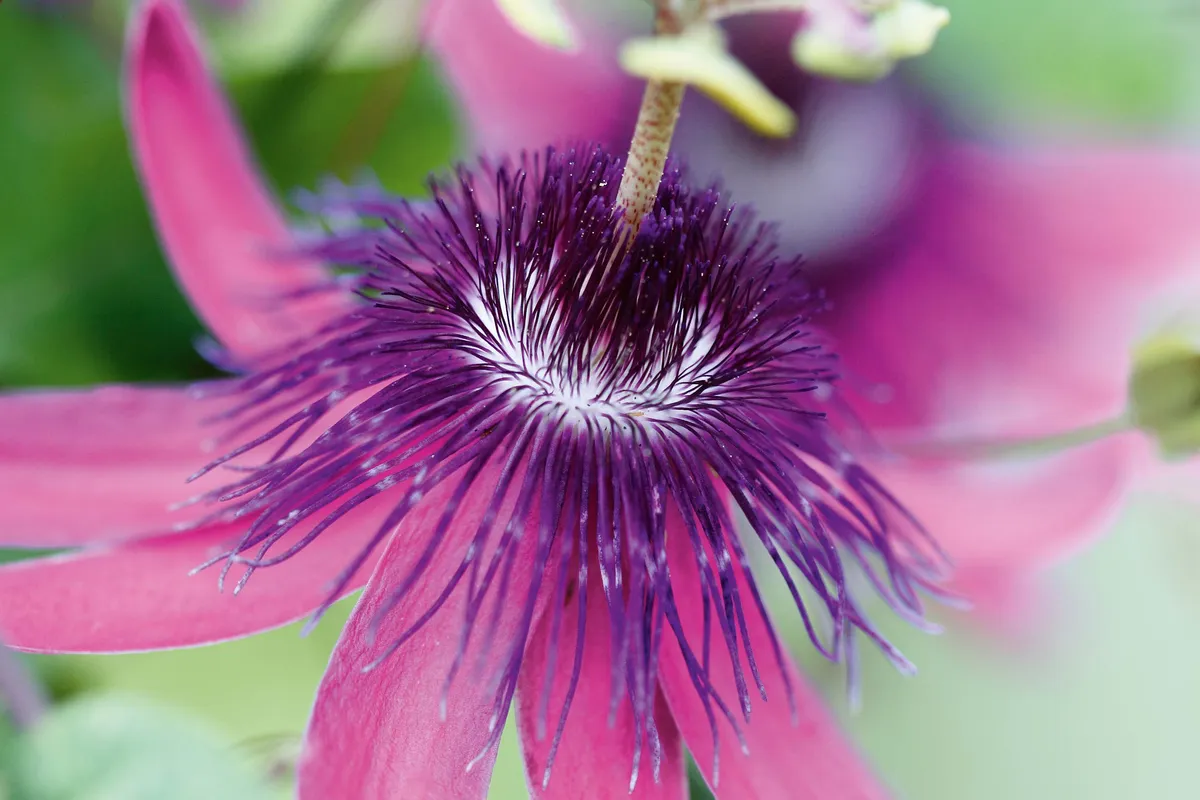
Passiflora ‘Abigail’ has strong purple colouring, fine shaping and looks particularly exotic for one of the hardier of the bunch. It flowers from May to October. Worth trying outdoors in a dry, sheltered spot, or in a cool glasshouse.
Passiflora conzattiana
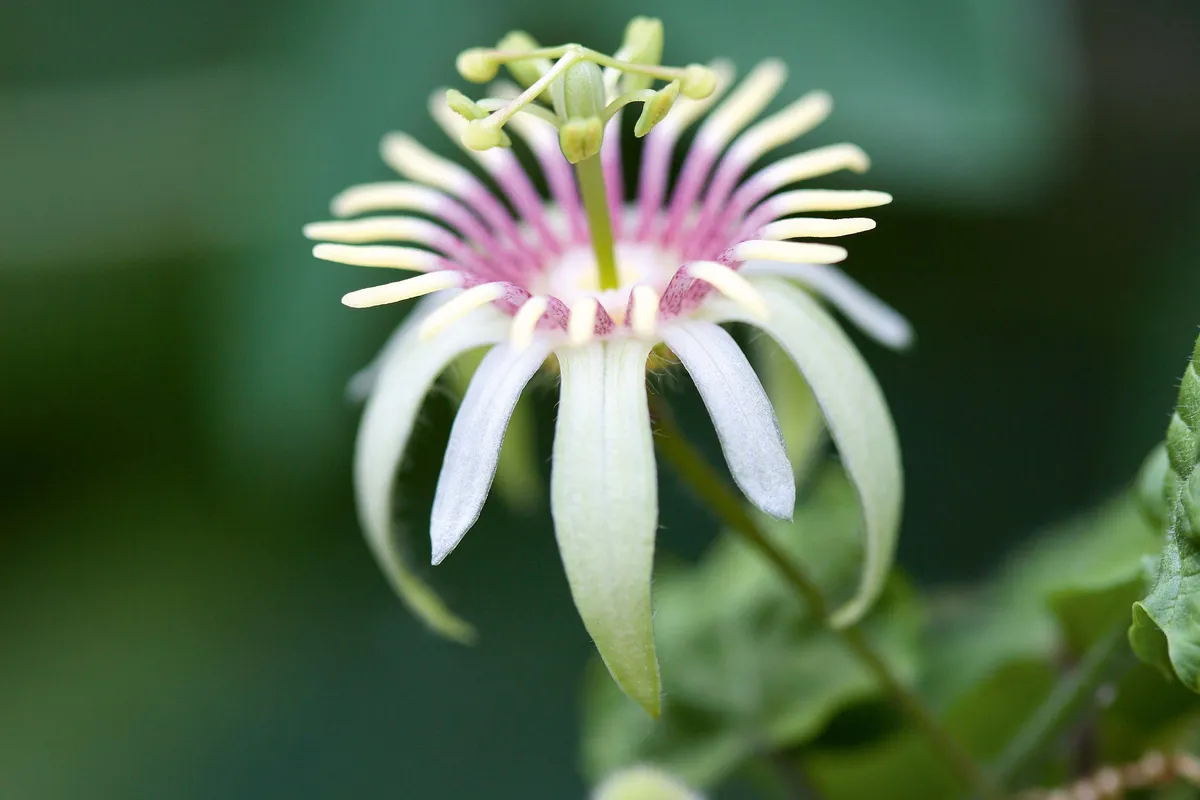
Grown as a houseplant in the USA, this little plant produces myriad tiny but striking green and dark-purple flowers from March to November. Very free flowering and happy wherever temperatures remain above 3°C.
Passiflora edulis

Often sold as hardy, Passiflora edulis actually needs a little protection from frost in order to thrive. Very vigorous, so grow it in the border of a large, unheated glasshouse or polytunnel. Produces the delicious edible fruit that we usually only find in supermarkets. Minimum UK temperature 10-16°C. 8m x 4m. USDA 8a-10b.
Passiflora caerulea ‘Constance Eliott’
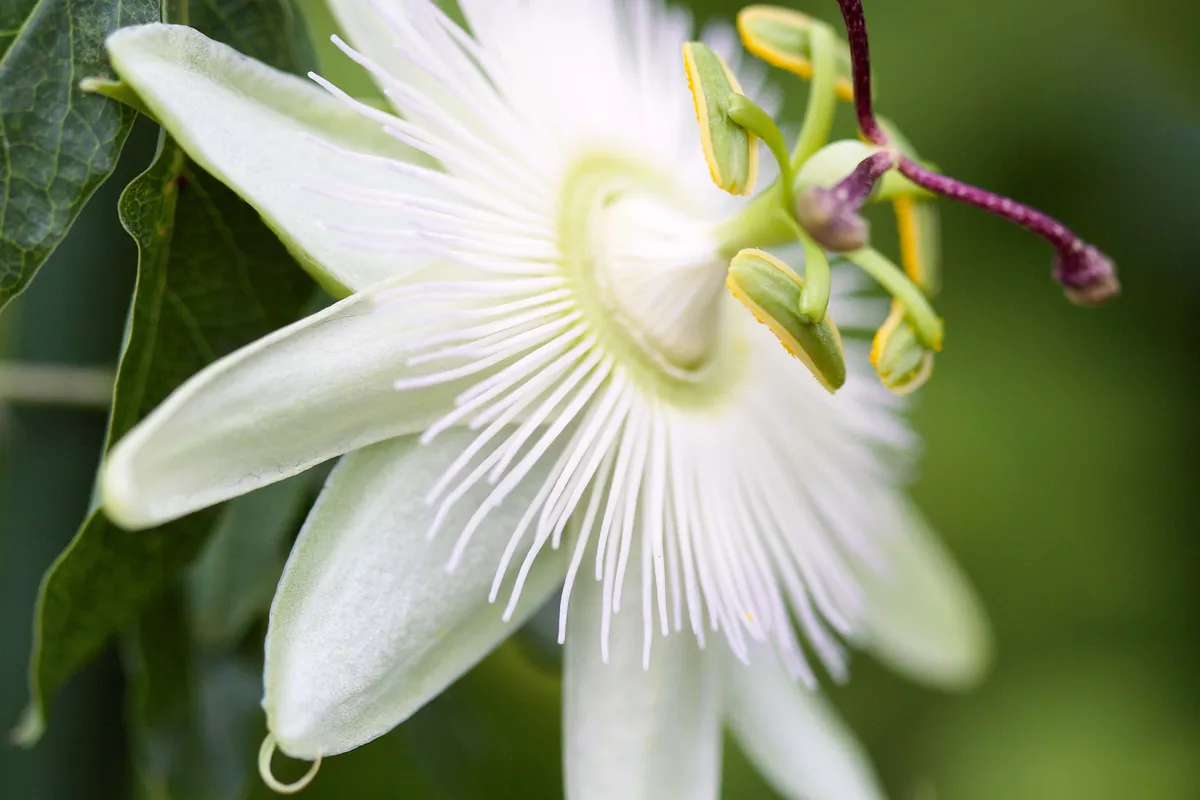
Purest white flowers and one of the hardier plants, but will still appreciate a sheltered aspect. Happy in sun or semi-shade and not too vigorous, so it keeps a better shape than some of the faster-growing types. Orange fruit in autumn. AGM. RHS H4, USDA 6a-10b.
*Holds an Award of Garden Merit from the Royal Horticultural Society.†Hardiness ratings given where available. You can find more information on plant hardiness ratings here.
